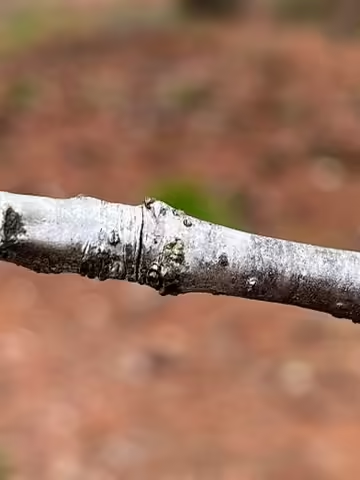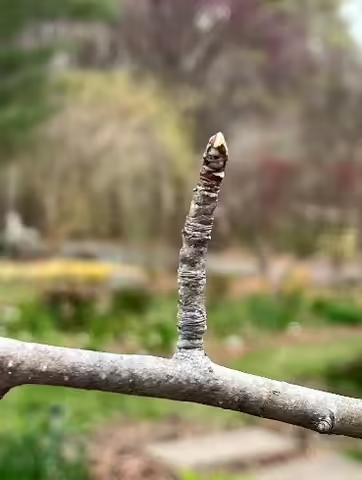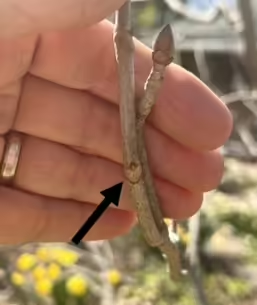Watching how plants grow is just fascinating. Like when a terminal bud begins growing in the spring after being dormant, it leaves behind a bud scale scar that encircles the entire twig or branch and is visible to the naked eye. Since each twig makes only one terminal bud per year, you can use these scars to determine the age of a twig or limb by counting the scars back from the tip. The first one you encounter marks the growth from the previous year, the next one the year before, and so on.
This is useful information beyond just knowing how old a branch is. In fruit trees, nitrogen fertilizer recommendations for homeowners are often adjusted up or down depending on last year’s growth rate. Measuring from the terminal bud to the first terminal bud scar is how we know how much the tree grew last year. If growth was not sufficient, the upper end of the recommendation would be used. If growth is in the recommended range, the lower end of the recommended nitrogen rate would be applied. If growth last year was excessive, then the nitrogen fertilizer rate would be reduced to balance the vegetative growth.
Another use of the terminal bud scars is during dormant pruning, specifically when making heading cuts in an apple or pear tree. To avoid excessive unproductive growth, the recommendation is to only cut into wood that is more than one year old or older. This means not to make a heading cut between the terminal bud and the first terminal bud scar. After you have mastered terminal bud scars on a “regular,” branch in your yard, check out a fruiting spur on an apple or pear when you get the chance. Spurs are compressed shoots that have such slow growth, the terminal bud scars are stacked one on top of another, making it difficult to determine the age of the spur.
Of course there is another type of bud scar that you may notice when looking for terminal bud scars, and that is a leaf scar. This is the scar left behind when a leaf abscisses or drops. They differ from a terminal bud scar in that there are as many scars as there are leaves that drop and they do not encircle the twig or branch, but rather mark the place where the petiole attached to the stem previously. The shape and other characteristics of leaf scars is commonly used to identify woody perennials during the dormant season.


